


Photomicrography -

One of our company’s areas of expertise is microscopy imaging. There are several ways in which still images and video clips can be obtained through a microscope and they each have various advantages and disadvantages. There are now both high power compound and low power stereomicroscopes with built in digital cameras so that the microscope is effectively attached directly to a computer. These do have their own disadvantages the main one being that few work well, if at all, with MAC computers and with each Windows version upgrade some models lose their drivers and cease to work. For this reason we do tend to advise against them with a few exceptions which we have included where relevant in this web site.
Below we have described the different types of cameras that can be used with a microscope. Each has a link to its own page which describes in detail how it works and what is available



Brunel Microscopes Ltd
Registered in U.K. (England) No: 2060047
find us on youtube, facebook and twitter






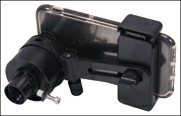
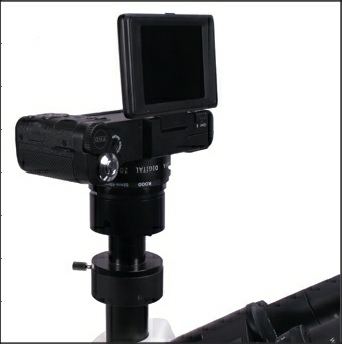

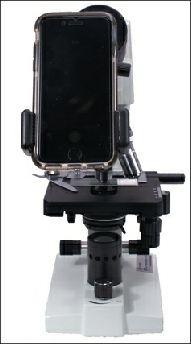

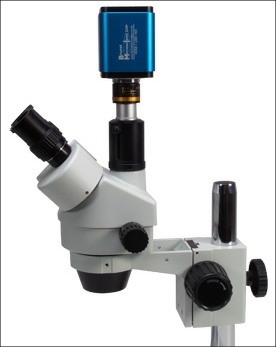

Mobile phone cameras
These days the cameras in mobile phones are good quality and can be used to take photographs down a microscope with good effect. A suitable system needs two things, a mechanism for holding the phone in the correct place that is easy to use and does not need three pairs of hands to work and an optical system to marry the optics of the phone with the optics of the microscope. The major Internet shops offer many different types often for just a few pounds cost. Unfortunately few work well mainly because they just hold the phone camera against the eyepiece of the microscope. Our Phonelink has an integrated optical system which replaces the existing microscope eyepiece an acts as a photoeyepiece.

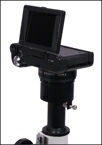
SLR and Compact cameras
SLR and mirrorless cameras can have their lens systems removed and have their camera backs attached to most microscopes using appropriate adapters and coupling rings (called T2 rings) so that the microscope becomes the lens system for the camera. Full frame cameras tend to give relatively poor results as the microscope image cannot cover all the chip. Additionally the shutter, in a small number of cameras, will not fire with the lens removed.
The vast majority of compact cameras cannot be used for photomicrography. There is no way of attaching them. There are a very small number that have a screw thread on the end of the lens which means they can be physically attached to an adapter, but most of these have a zoom mechanism that will not marry with the microscope optics. For detailed information follow the link.


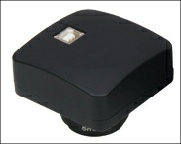
Digital cameras
These are cameras that connect to a laptop or PC via a USB lead (USB 2 or 3) and have image manipulation software that allows still images, video clips and specimen measurement. All will work with Windows OS and some but not all with MAC OS. The smaller units can be used instead of an eyepiece and the larger units attached to a trinocular phototube. They are available in a range of Megapixel chip sizes. These cameras work by giving a constant video feed to the computer which means that USB ports will often buffer the information causing a slight time lag which is not a problem for still images. However it does mean that fast moving objects may appear as a blur in video clips or if the image is used for real time demonstrations -


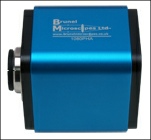
HDMI cameras
These are multiple interface cameras that can produce live images directly onto a monitor without the need to be connected to a computer, although they can connect to a computer with the software supplied via a WiFi dongle -


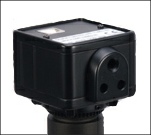
CCD cameras
There are two types of digital camera chips and their names relate to the way that light falling on the pixels of the chip are harvested. The CMOS chip is used for phone cameras and the range of SLR and compact cameras. However for specific medical and scientific applications a CCD chip is preferred because they are more sensitive than CMOS chips in low light situations such as fluorescence microscopy. Although these days the quality of CMOS chips has improved significantly and there is much less difference in their sensitivity compared to CCD. Cameras with CCD chips do produce heat and are often cooled with on board fans and black and white CCD chips are even more sensitive. These are specialist cameras and are not for general use
